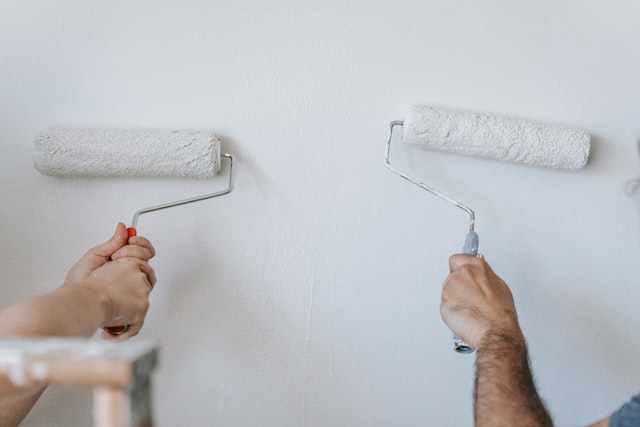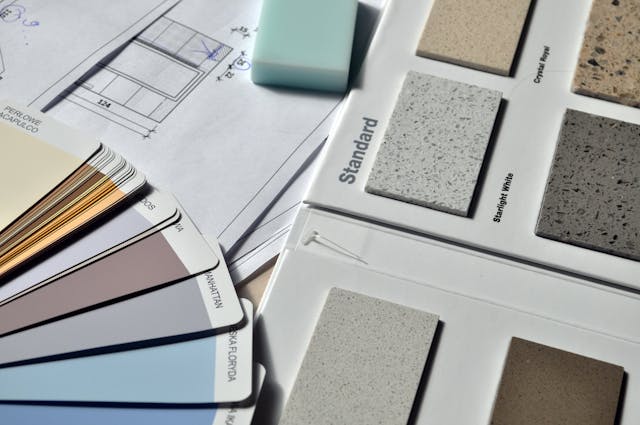Should I Allow Tenants to Paint my Rental Property

Have you ever had a tenant ask if they can paint the walls in your rental property? It’s a common request, but deciding whether to say yes can be tricky for landlords. While a fresh coat of paint can make a space feel more personalized and welcoming for tenants, it can also bring challenges like added maintenance and unexpected costs.
Understanding the pros and cons of allowing tenants to paint is essential for protecting your investment and keeping your property in top shape. In this article, we’ll explore everything you need to know before making this decision.
Benefits of Allowing Tenants to Paint Your Rental Property
Allowing new tenants the flexibility to paint their rental space offers several advantages for landlords, from enhancing tenant satisfaction to increasing the value and appeal of your property.
Here’s why giving tenants this creative freedom can be a smart move for your rental business:
Strengthening the Landlord-Tenant Relationship
Allowing tenants to paint their rental unit can create a positive bond between you and your tenants. By giving them the freedom to make the space their own, tenants feel more comfortable and valued, which often leads to longer stays.
When tenants feel heard and empowered, they are more likely to respect the property and communicate openly about any maintenance issues.
Stand Out from the Competition
In a competitive rental market, offering something extra can set your property apart from others. By allowing tenants to personalize their home through painting, your rental becomes more attractive to potential tenants.

It’s a small gesture, but one that many landlords overlook, giving you a distinct advantage. Renters who are seeking a place that feels more like home will likely choose your property over one that has stricter rules.
Opportunity for Higher Rental Income
A property that allows for some tenant customization, like painting, could potentially justify higher rent. Tenants are often willing to pay more for a space that feels like their own, as it enhances their living experience.
You can also strategically offer painting privileges to more responsible tenants, who might be willing to pay a premium for that flexibility.
Promoting Tenant Accountability
When tenants are given permission to personalize their space by painting, they often feel a greater sense of responsibility toward the property. They view it more like their own home, leading to better care and maintenance.
Tenants who invest time and effort into improving their living environment are less likely to cause damage or neglect repairs. By fostering this sense of ownership, you are likely to experience fewer maintenance issues and lower wear-and-tear costs.
Drawbacks of Allowing Tenants to Paint Your Rental Property
Allowing tenants to paint your rental property may seem like a harmless request, but it can come with several drawbacks that impact your investment and management efforts.

Here’s a closer look at the potential challenges you may face:
- Limited Control Over Aesthetic Choices: Tenants may choose colors or designs that are not in line with your vision or what appeals to future renters. This can make the property harder to market or may require additional work to revert it back to a neutral, appealing state for the next tenants.
- Increased Costs for Repainting or Repair: If tenants don’t paint properly or choose colors that are difficult to cover, you could end up facing extra costs. Repainting can be expensive, especially if the walls require extra coats to fix mistakes or cover bold colors. You may also need to repair any damage caused by sloppy painting, which adds to your expenses.
- Ongoing Maintenance Difficulties: When tenants paint without professional skills, the quality of the work may be subpar. This can lead to peeling, uneven coats, or even damage to surfaces like trim or ceilings. These issues require additional maintenance, which could mean more time and money spent addressing these problems in between tenancies.
- Potential Disagreements Over Paint Quality or Color Choices: Even with permission to paint, disagreements can arise between landlords and tenants. You may not agree with the color choices or the quality of the work. What looks good to one person might not appeal to another, and resolving these disputes can lead to tension, especially when it comes to who covers the cost of restoring the property.
Tips to Paint the Rental Safely
Allowing tenants to paint your rental can be a great way to let them personalize the space, but it’s important to set guidelines to protect your property.

Here are key steps to ensure painting is done safely and responsibly:
- Discuss the Color Choice in Advance: Before giving tenants the green light to paint, it’s important to discuss and agree on the colors they plan to use. Allowing tenants to paint without prior approval could lead to unexpected results—such as colors that might not appeal to future renters or affect the property’s aesthetic.
- Encourage Professional Painting Assistance: While many tenants may want to take on the painting themselves, encouraging or requiring professional assistance is a smart move for landlords. Professional painters are trained to handle the job efficiently, ensuring that walls, ceilings, and trims are properly painted without spills or drips.
- Set Clear Painting Guidelines and Limits: As a landlord, it’s crucial to set clear boundaries about where and how painting can be done. Specify which areas of the rental are eligible for painting and ensure that tenants understand the importance of protecting flooring, baseboards, and other surfaces from paint damage.
- Include a Restoration Clause in the Lease Agreement: To protect yourself from unwanted paint jobs, consider adding a restoration clause in the lease agreement. This clause would require tenants to restore the painted walls to their original color or cover the cost of doing so before moving out.
Bottom Line
Deciding whether to allow tenants to paint your rental property is a personal choice, and it depends on your goals as a landlord. While giving tenants some flexibility can make them feel more at home, it’s important to weigh the potential drawbacks like added costs and maintenance.
If you’re unsure or want to avoid the hassle altogether, hiring a property management company can make things easier. Limehouse Property Management can help you set clear guidelines, handle tenant requests, and ensure your property stays in top condition. Let the experts manage your property, so you can enjoy peace of mind.
